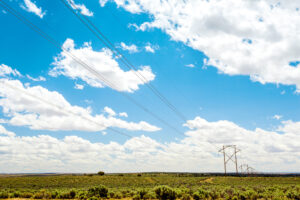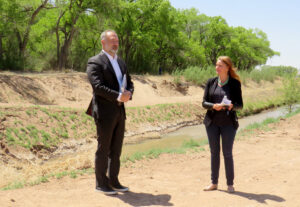Archaeology Southwest report finds lack of tribal consultation in oil and gas leasing

Oil and gas development on federal lands has prioritized development over protection of cultural sites and has occurred with inadequate tribal consultation, according to a new report authored by Paul Reed, a preservation archaeologist with Archaeology Southwest.
During a press conference on Tuesday, Reed said that needs to change.
Reed said Archaeology Southwest began a review of oil and gas leasing policies and approaches as President Joe Biden’s administration took office earlier this year.
“The goal of our review was to identify problems and issues that need to be addressed,” he said.
At the same time, the U.S. Department of Interior is also reviewing its oil and gas leasing program. Reed said Archaeology Southwest is “optimistic that many of the issues that we’ve raised in our report will be addressed in that review as well.”
He said that the Archaeology Southwest report reached two primary conclusions: that the oil and gas leasing program “prioritizes the use of public lands for mineral extraction at the expense of protecting cultural resources and landscapes” and that the Bureau of Land Management and other agencies are failing to consult Native American tribes.
The oil and gas industries maintain existing laws, such as the National Historic Preservation Act, provide protections for cultural sites and that those protections are enough to prevent damage to cultural landscapes like the Greater Chaco region. Additionally, they say studies are required to identify potential cultural resources that could be impacted, highlighting the National Environmental Policy Act review process that leases must go through.
But Bruce Babbitt, a former Secretary of the Interior under President Bill Clinton who also served as Arizona governor from 1978 until 1987, said this does not adequately protect cultural landscapes and the tribes do not get enough opportunities to weigh in on proposed leases.
“BLM has historically been a passive presence,” Babbitt said. “The oil and gas companies head out onto the land and decide what they want and then lean on the BLM to begin a leasing process, which is driven not by the cultural values of the landscape but by priorities of the oil and gas companies.”
While steps may be taken to minimize impacts to structures, Babbitt said the BLM hardly ever takes an approach that would limit the impact of development to an entire landscape.
“The tribes are essentially left out of the early stages of the process and what consultation there is tends to be passive, coming at the very end when the oil companies, with concurrence with the BLM, have decided what they want, specifically where it is that they want to be and what they’ve selected. And, at that point, the fragmentation of the landscape is inevitable,” he said.
Babbitt said the process needs to be fundamentally restructured to increase tribal consultation and to plan across an entire cultural landscape.
Reed said that the BLM should take a more active role in the planning and management of oil and gas leasing rather than letting the industry “call the shots” and that known, sensitive cultural areas—such as the 10-mile buffer zone around Chaco Culture National Historical Park—should be removed from leasing.
Additionally, he said Indigenous communities should be involved through all parts of the leasing process.
Brian Vallo, governor of Pueblo of Acoma, expressed support for the Archaeology Southwest support’s recommendations, especially increased tribal consultation.
Vallo has advocated for protections in the Greater Chaco landscape for years and the area is the ancestral homeland of his people.
The All Pueblo Council of Governors successfully lobbied for federal funding for a comprehensive ethnographic study focused on the Greater Chaco region. Vallo said this study will likely be released to the public in spring of 2023.
The $1 million Congressional appropriation was split between the Pueblo tribes and the Navajo Nation. Vallo said an additional $600,000 was recently awarded to help complete the work.
Vallo said the study came about because there has been great damage caused to the cultural landscape and to the natural resources by oil and gas extraction.
“We needed to provide that ethnographic data to the agency, or agencies, so that they understand the landscape from the cultural perspective,” he said. “And the fact that the resources, including water, and air, and the vegetation on the landscape, are all at risk. And these resources are in fact, cultural resources.”
While future oil and gas leasing near Chaco still needs to be determined, the majority of the federal land available for leasing in the San Juan Basin has already been leased and many of the wells are reaching the end of their lives.
Vallo expressed hope that the ethnographic report will be recognized as the source of information for the BLM as well as other agencies engaged in work both in Chaco Canyon and in other parts of the Greater Chaco landscape.
“We have been in this fight for so long and we do feel that, having reached this point that we can conduct this ethnographic study and provide information to the DOI and it’s agencies, that we will be better equipped to begin to address the damage and the great detriment that has been caused as result of the continuous extraction of the womb of mother earth and all the gifts that are provided by the landscape to our people,” he said.







